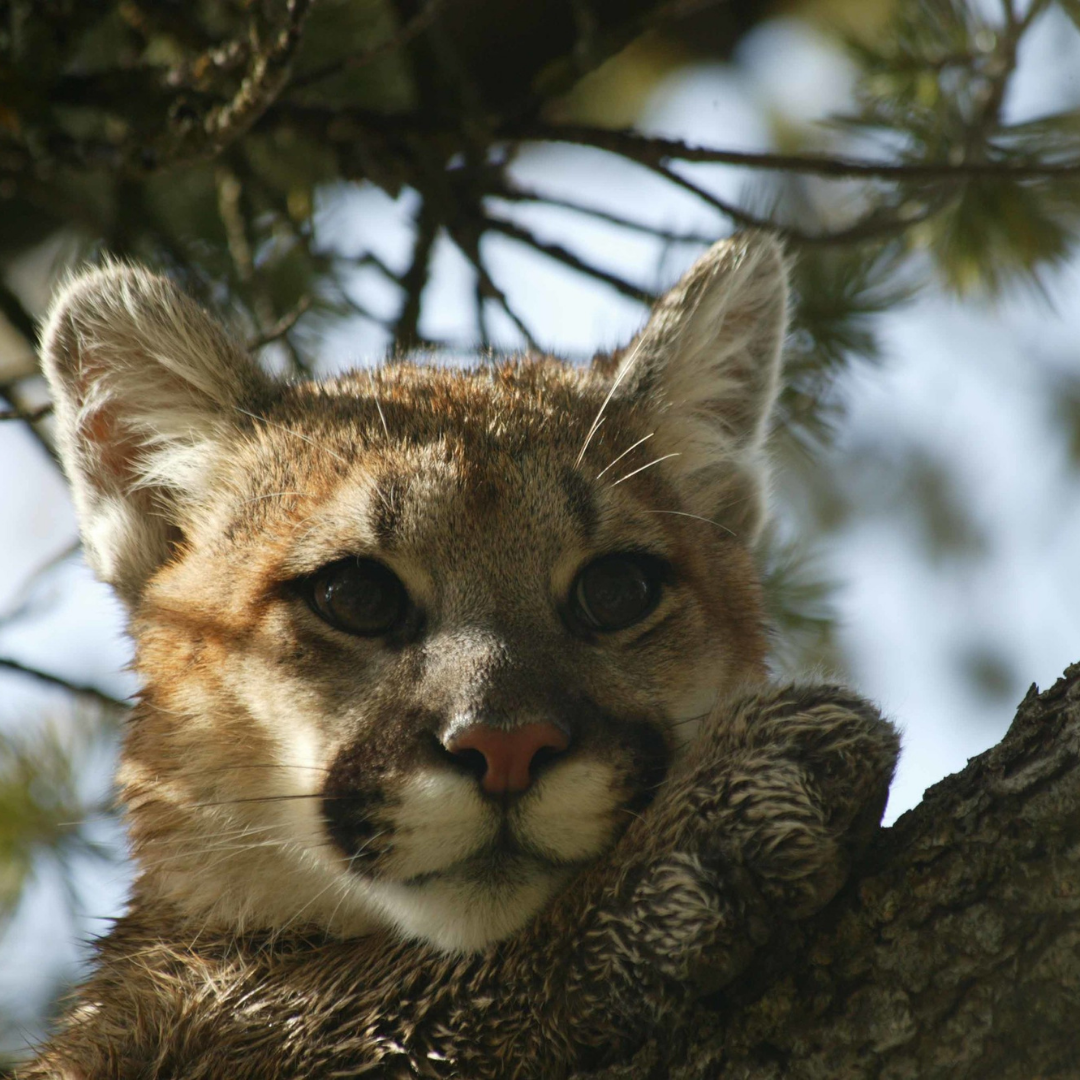Non-Invasive Monitoring Project
The Non-Invasive Monitoring Project (NIMP) was initiated in 2011 to assess and compare several non-invasive techniques for estimating cougar populations in Jackson Hole, such as camera traps, scat-detection dogs and snow-tracking. Our findings demonstrated several benefits and drawbacks to these methods, including the finding that individual cougars are extremely difficult to distinguish in photographs taken by camera traps, raising important implications for camera trap-based population estimates. Since this initial study, the project has focused on improving camera trapping methods, including developing novel field technologies, analytical tools, and advanced machine learning techniques for image analysis. We have also expanded the project to other species in the Greater Yellowstone, such as red foxes and black bears. We are currently working on developing a software package to aid in the analysis of camera trap data, and studying the potential effects of camera trap flash-type on animal behavior.
A sub-adult cougar. Face on photos are important for accurate and reproducible camera trap recognition.
Publications:
SNAPSHOT USA 2020: a coordinated national camera trap survey of the United States (in review). (2022). Cove MV. et al.
Disturbance type and species life history predict mammal responses to humans. (2021). Suraci, J. P., Gaynor, K. M., Allen, M. L., Alexander, P., Brashares, J. S., Cendejas‐Zarelli, S., ... & Wilmers, C. C. Global Change Biology.
A Novel Camera Trapping Method for Individually Identifying Pumas by Facial Features(in review). (2021). Alexander, P. Craighead D.
Identifying individual cougars (Puma concolor) in remote camera images–implications for population estimates. (2018). PD Alexander, EM Gese. Wildlife Research, 45, p. 274.
Comparing conventional and noninvasive monitoring techniques for assessing cougar population size in the southern Greater Yellowstone Ecosystem. (2016). Peter D. Alexander. Master of Science (Wildlife Biology) at Utah State University.
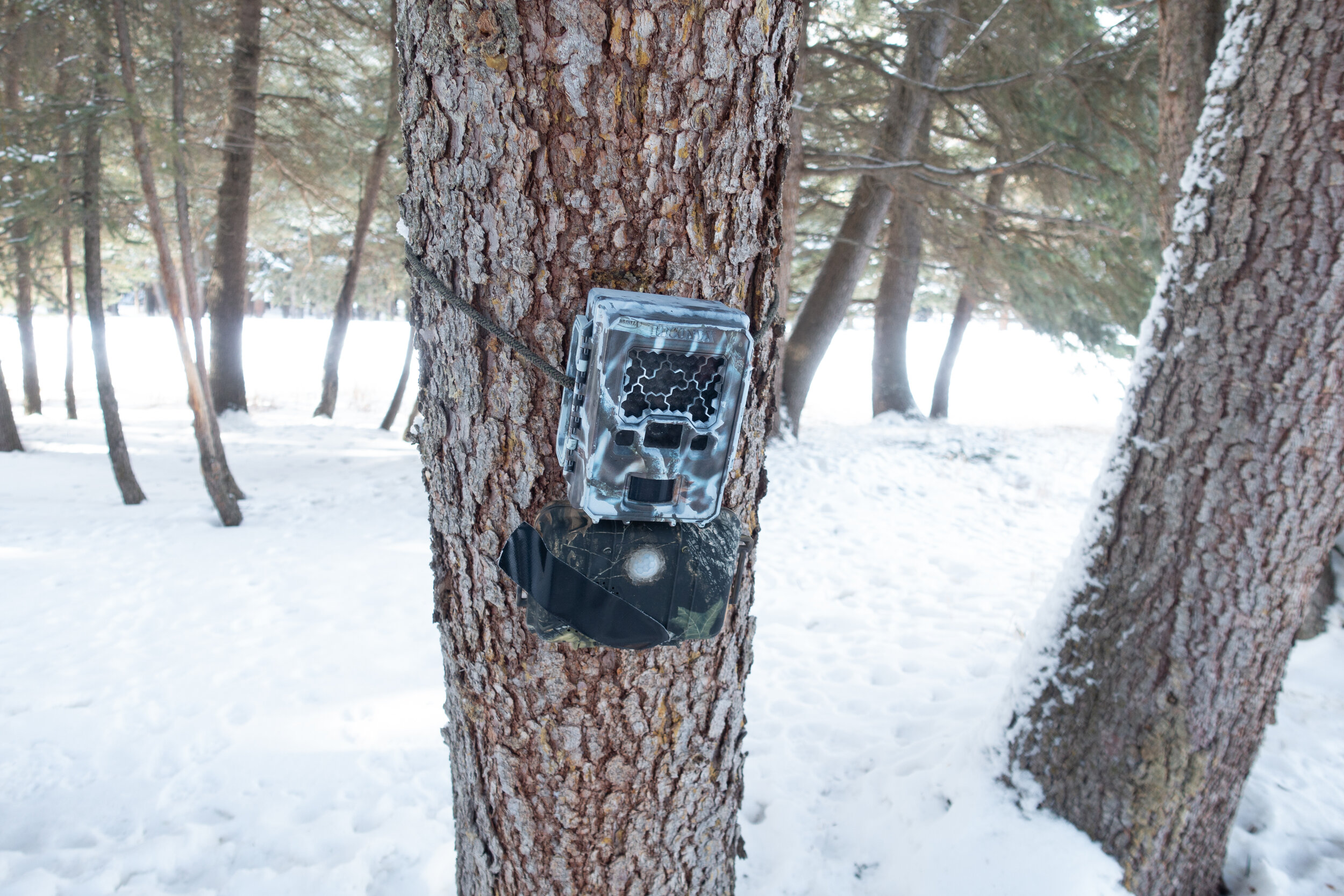
Various techniques were tried to increase the chance of getting a good face on photo for identification purposes.

A cougar camera trap placed to blend in with the landscape.

Cougar faces may be an important feature for individual identification, which helps conservationists estimate population size.

A camera trap near the Snake River recorded this rare interaction at a Grizzly killed elk carcass.
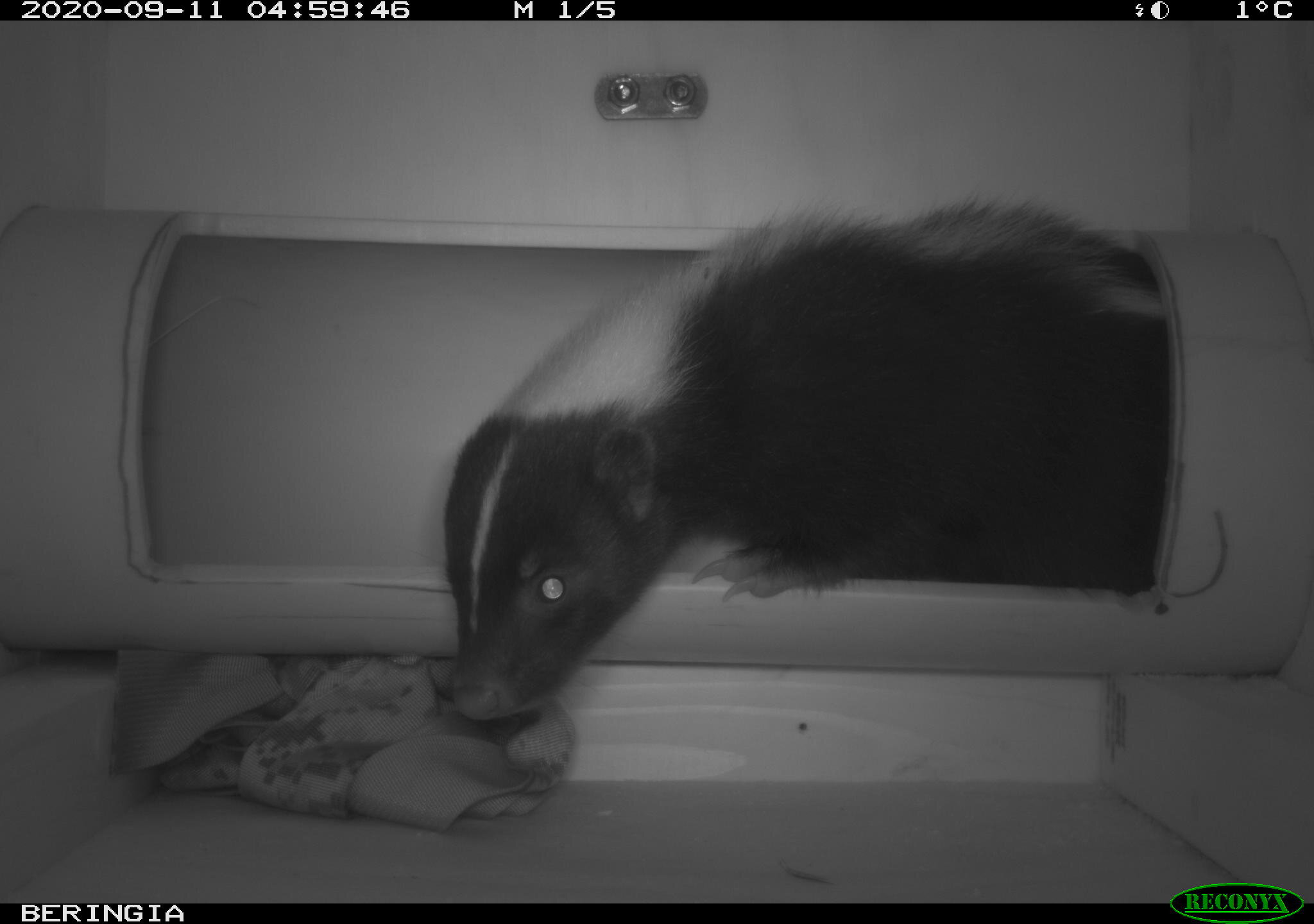
A striped skunk briefly examines the inside of this special non-invasive camera trapping box used for monitoring smaller carnivores which are often missed by conventional camera traps.

Camera traps can provide rare insights into animal behavior and diet.

"White flash" camera traps are sometimes used to improve species or individual identification, but may have important behavioral side effects. CBS is currently studying how the use of such cameras may impact camera trapping research.

A cougar with young kittens captured by a camera trap in the Gros Ventre. This data was included in the nationwide mammal survey Snapshot USA.
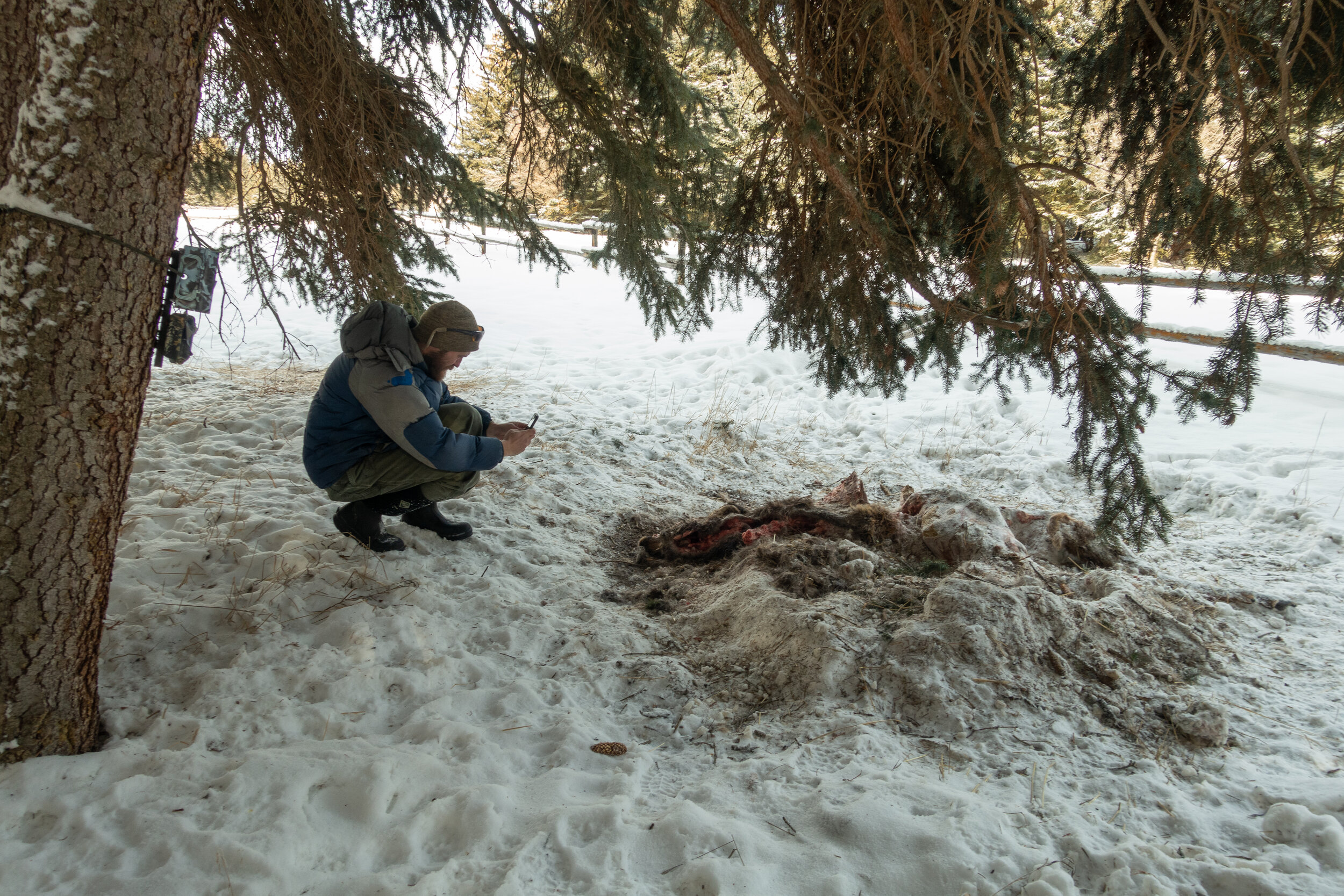
A cougar biologist is examining a kill at a camera trap sight.
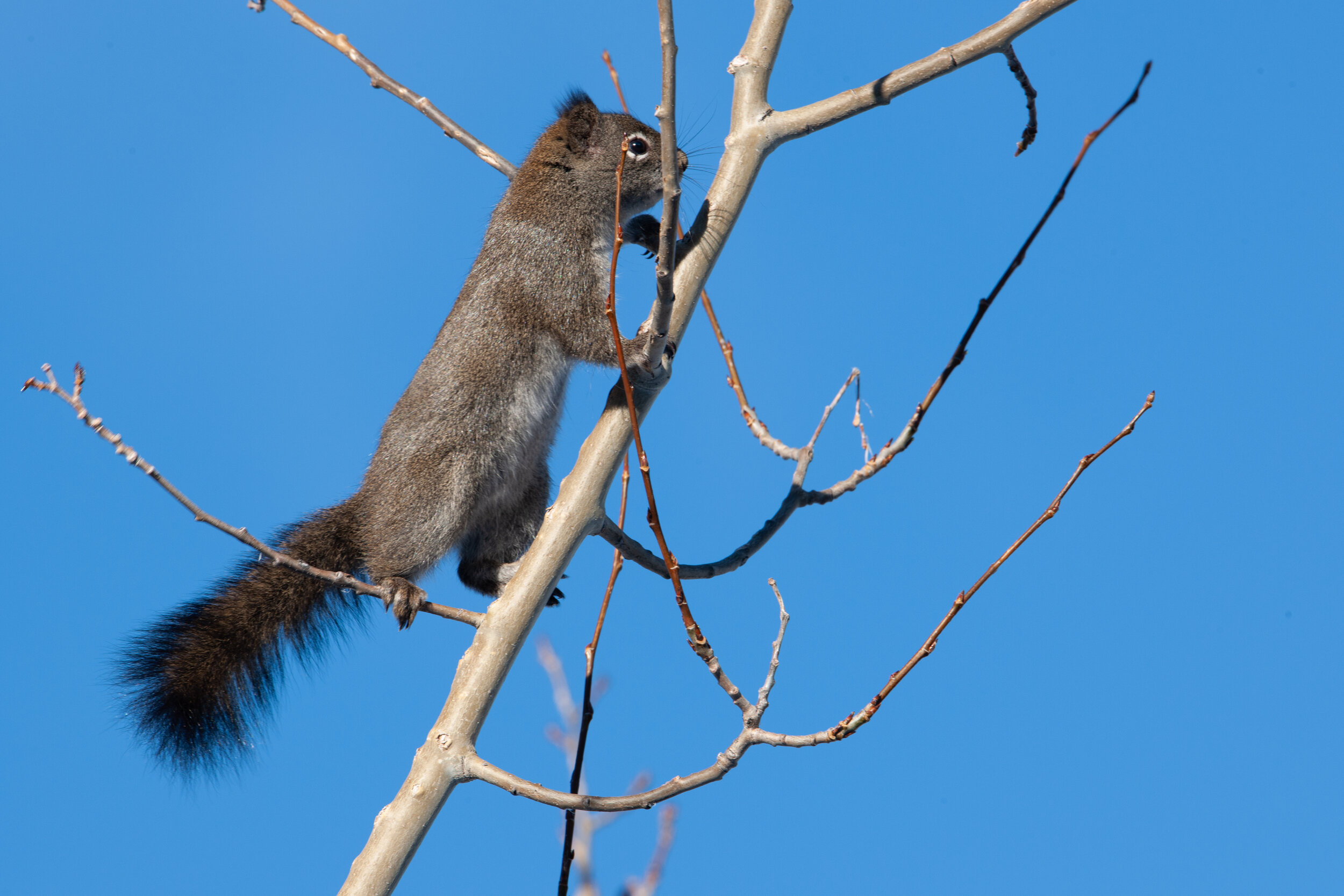
We encourage non-invasive techniques to studying wildlife.

Cougars after feeding on a large kill will cover it with snow and dirt. They will rest nearby to return and feed on it multiple days.

